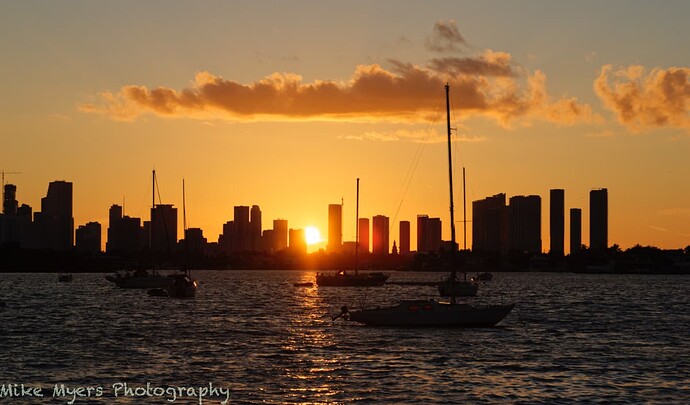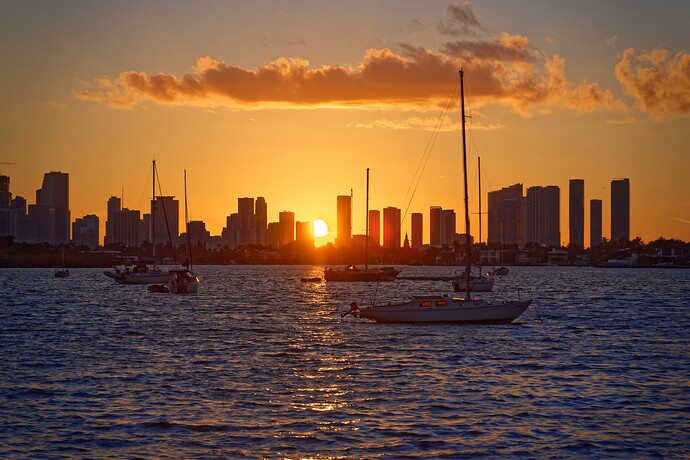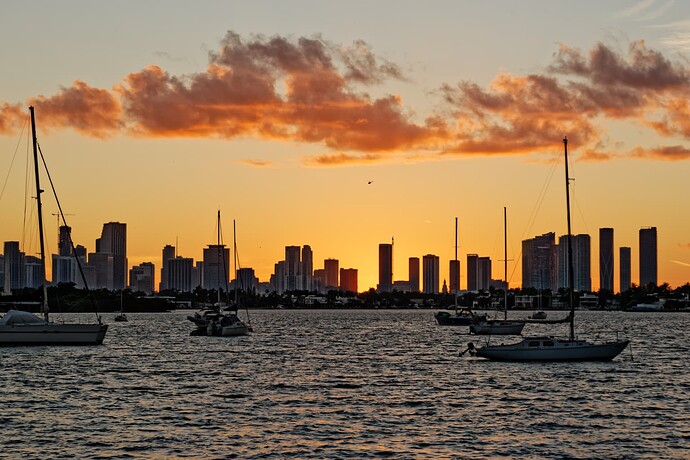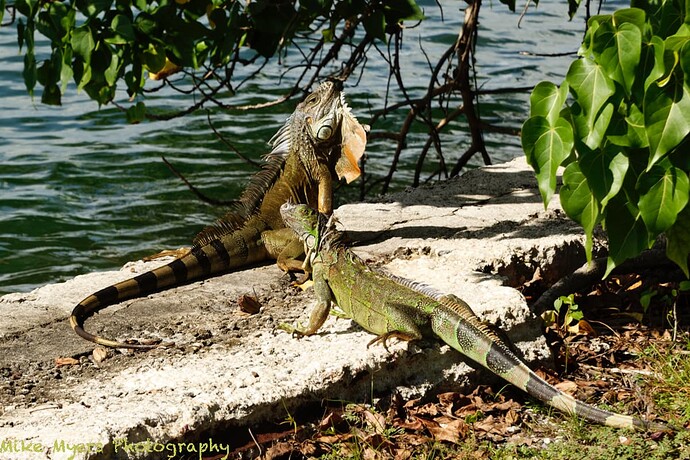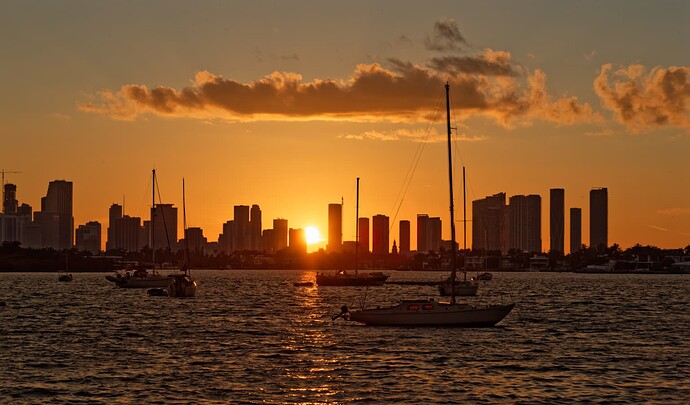Yesterday was an especially clear day, and I thought I might get a better sunset photo. I was wrong on all counts, and I certainly did NOT get a perfect exposure.
I took 40 or so photos at the suggested settings as the sun was moving down, none of which I both “liked” and which seemed technically satisfactory. I took the spot reading on the sun, but it was so clear, and there were so few clouds, and the “color” I wanted to see never showed up. To be honest, I did like the final editing attempt, but the sun is totally blown out - people here will complain, but anyone else will accept that I was obviously looking into the sun. (No excuse, and overexposing the image by 1.7 stops didn’t help any…) I want to crop out the boring right side, and make the sky brighter as I’ve learned here, but I’m most interested in what I could have done better. One obvious choice would have been to just raise the shutter speed several stops until the sun was no longer burnt out.
I’ll upload three photos. The first one is slightly edited, but the area near the sun is burnt out. (I like it anyway, but that’s irrelevant…)
The second shows the sun a little lower, but the reflection in the water which is essential to the photo, is almost gone. I don’t like this image at all, because of the lack of reflection in the water.
The third is after the sun had set, but there was hardly any color in the sky, and obviously no reflection. I set exposure comp back to 0 for this shot as a test. I’m sure with PL5 I can make it look nicer, but I really wanted the sun and the water reflection in the photo. (I think that had the weather been a little more hazy, that would have reduced the light from the sun, scattering it all over the photo, maybe with a bright orange/red sky, but this wasn’t to be.
It was taken with my 24-85 zoom, at f/11, and I bumped the ISO up to 200 because I was using the zoom hand-held. In retrospect, I wish I had bumped it up to 400, so the shutter would have been around 1/400th - this was just a test, and I didn’t bring my tripod.
_MJM9346 | 2021-10-26.nef (26.0 MB)
_MJM9346 | 2021-10-26.nef.dop (13.5 KB)
_MJM9352 | 2021-10-26.nef (26.6 MB)
_MJM9355 | 2021-10-26.nef (26.3 MB)
